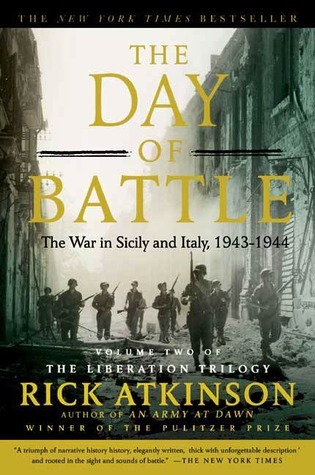More on this book
Community
Kindle Notes & Highlights
Read between
October 15 - October 31, 2017
The American high command at Casablanca agreed to support HUSKY because the capture of Sicily would further safeguard Mediterranean shipping and perhaps divert Axis strength from the Soviet front; it would also provide air bases for bombing Italy and other targets in occupied Europe, and might cause weak-kneed Rome to abandon the war by abrogating its “Pact of Steel” with Berlin, formalized in May 1939.
“Naval Operations Order HUSKY,”
in six days, on July 10, two armies—one American and one British—would land on the southeast coast of Sicily, reclaiming for the Allied cause the first significant acreage in Europe since the war began. An estimated 300,000 Axis troops defended the island, including a pair of capable German divisions, and many others lurked nearby on the Italian mainland.
Five weeks after issuing a secret alert called Preparations for Movement by Water, the Army discovered that units crucial to HUSKY had never received the order and thus had no plans for loading their troops, vehicles, and weapons onto the convoys.
Transportation officers wrestled with small oversights—the Navy had shipped bread ovens but no bread pans—and big blunders, as when ordnance officers mistakenly sent poisonous mustard gas to the Mediterranean.
“Many men do not have a clear understanding of what they are fighting for,” a morale survey concluded in the summer of 1943, “and they do not know their role in the war.”
A British officer in Cairo had even sent his gabardine uniform to be dry-cleaned with a notebook containing the HUSKY battle plan left in the pocket; security agents raided the shop and found that the incriminating pages had been torn out and used as scratch paper to write customer invoices.
An amphibious landing on a hostile shore, Eisenhower knew, was the hardest operation in warfare: wading ashore under fire, building a secure lodgement beyond the beach,
In the long history of combat, the amphibious art had been mastered by no one.
Eisenhower also knew that the Italian navy—the only substantial Axis naval force in the Mediterranean, with six battleships and eleven cruisers—lacked radar, fuel, and aircraft carriers. The Italian air force had lost 2,200 planes in the past eight months and had little sense of the Allies’ whereabouts. “No one,” an Italian admiral complained, “can play chess blindfolded.” Not least, Eisenhower had a good sense of Italy’s social disintegration under the pressures of war and Allied bombing: coal and food shortages, labor strikes, rail disruptions, even a profound lack of lightbulbs.
HUSKY would be the largest amphibious operation of World War II—the seven divisions in the assault wave were two more than would land at Normandy eleven months later—but it lacked imaginative dash.
And Montgomery’s revised plan meant that the Americans, lacking a port, would have to sustain a combat army over the beaches in ways never before attempted.
Some pilots found the critical turn at Malta, where Eisenhower stood craning his neck. Most did not. Soon the central Mediterranean was swarming with lost aircraft as crews tried to dead reckon their way north.
More than 3,400 paratroopers were scattered across southeastern Sicily, as much as sixty-five miles off target.
If stunned by the Allied invasion, the defenders appeared unsurprised.
Mines proved more galling than enemy guns.
Troops loitered in the dunes, or traded potshots with flitting Italian gunmen.
Some LSTs steamed away to anchorages offshore without unloading an ounce of cargo—much less tanks—and the Navy would inadvertently return to North Africa with much of the signal equipment for the Gela assault still crated in the holds.
As shore operations bogged down, the captains of some ships, fearing air attack, weighed anchor for North Africa without unloading.
Swaggering eight abreast down Oran sidewalks, they shoved the khaki-clad into the gutters and ripped the campaign ribbons from khaki blouses.
“It is essential that all subordinate units be cautioned not to fire on these friendly planes.” Although Patton signed the order at 8:45 A.M., congestion in Monrovia’s signal room kept it from being coded and dispatched until 4:20 P.M. Ridgway this afternoon had traipsed among antiaircraft batteries along Green 2 asking whether the gunners knew that “aircraft bearing friendly parachute troops” would soon be overhead: five crews had in fact heard, while a sixth had not.
“Planes tumbled out of the air like burning crosses,” recalled a soldier in the 1st Battalion. “Others stopped like a bird shot in flight.” A few pilots refused to drop their sticks, considering it tantamount to murder, although one crew chief told a 504th battalion commander, “It’s a hell of a lot safer out there than it is in here.”
Two war correspondents who had seen the bodies also appeared at Patton’s headquarters to protest these and other prisoner killings. Patton pledged to halt the atrocities, and the reporters apparently never printed a word.


